Department+of+Nuclear+and+Quantum+Engineering
-
 KAIST's Research Team Receives the Best Paper Award from the IEEE Transaction on Power Electronics
A research team led by Professor Chun T. Rim of the Department of Nuclear and Quantum Engineering at the Korea Advanced Institute of Science and Technology (KAIST) has received the First Prize Papers Award from the IEEE (Institute of Electrical and Electronics Engineers) Transactions on Power Electronics (TPEL), a peer-reviewed journal that covers fundamental technologies used in the control and conversion of electric power.
A total of three research papers received this award in 2015.
Each year, TPEL’s editors select three best papers among those published in the journal during the preceding calendar year. In 2014, the TPEL published 579 papers. Professor Rim’s paper was picked out as one of the three papers published last year for the First Prize Papers Award.
Entitled “Generalized Active EMF (electromagnetic field) Cancel Methods for Wireless Electric Vehicles (http://ieeexplore.ieee.org/xpls/abs_all.jsp?arnumber=6684288&tag=1),” the paper proposed, for the first time in the world, three generalized design methods for cancelling the total EMF generated from wireless electric vehicles. This technology, researchers said, can be applied to any wireless power transfer systems.
The award ceremony will be held at the upcoming conference of the 2015 IEEE Energy Conversion Congress and Expo in September in Montreal, Canada.
2015.08.27 View 8761
KAIST's Research Team Receives the Best Paper Award from the IEEE Transaction on Power Electronics
A research team led by Professor Chun T. Rim of the Department of Nuclear and Quantum Engineering at the Korea Advanced Institute of Science and Technology (KAIST) has received the First Prize Papers Award from the IEEE (Institute of Electrical and Electronics Engineers) Transactions on Power Electronics (TPEL), a peer-reviewed journal that covers fundamental technologies used in the control and conversion of electric power.
A total of three research papers received this award in 2015.
Each year, TPEL’s editors select three best papers among those published in the journal during the preceding calendar year. In 2014, the TPEL published 579 papers. Professor Rim’s paper was picked out as one of the three papers published last year for the First Prize Papers Award.
Entitled “Generalized Active EMF (electromagnetic field) Cancel Methods for Wireless Electric Vehicles (http://ieeexplore.ieee.org/xpls/abs_all.jsp?arnumber=6684288&tag=1),” the paper proposed, for the first time in the world, three generalized design methods for cancelling the total EMF generated from wireless electric vehicles. This technology, researchers said, can be applied to any wireless power transfer systems.
The award ceremony will be held at the upcoming conference of the 2015 IEEE Energy Conversion Congress and Expo in September in Montreal, Canada.
2015.08.27 View 8761 -
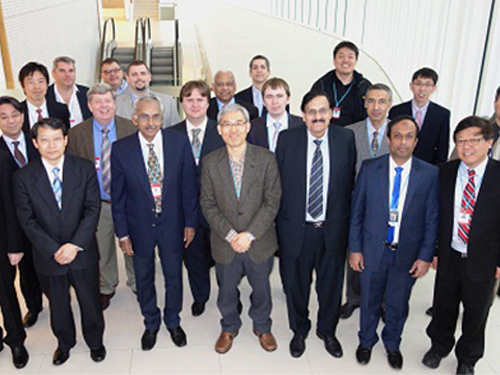 Professor Rim Presents at IAEA Workshop in Vienna
Professor Chun-Taek Rim of the Department of Nuclear and Quantum Engineering at KAIST recently attended the International Atomic Energy Agency (IAEA)’s workshop on the Application of Wireless Technologies in Nuclear Power Plant Instrumentation and Control System. It took place on March 30-April 2, 2015, in Vienna, Austria.
Representing Korea, Professor Rim gave a talk entitled “Highly Reliable Wireless Power and Communications under Severe Accident of Nuclear Power Plants (NPPs).” About 20 industry experts from 12 countries such as AREVA (France), Westinghouse (US), Oak Ridge National Laboratory (US), Hitachi (Japan), and ENEA (Italy) joined the meeting.
The IAEA hosted the workshop to explore the application of wireless technology for the operation and management of NPPs. It formed a committee consisting of eminent professionals worldwide in NPP instrumentation and control systems, communications, and nuclear power to examine this issue in-depth and to conduct various research projects for the next three years.
In particular, the committee will concentrate its research on improving the reliability and safety of using wireless technology, not only in the normal operation of nuclear plants but also in extreme conditions such as the Fukushima Daiichi nuclear accident. The complementation, economic feasibility, and standardization of NPPs when applying wireless technology will be also discussed.
Professor Rim currently leads the Nuclear Power Electronics
and Robotics Lab at KAIST (http://tesla.kaist.ac.kr/index_eng.php?lag=eng).
Picture 1: Professors Rim presents his topic at the IAEA Workshop in Vienna.
Picture 2: The IAEA Workshop Participants
2015.04.07 View 11300
Professor Rim Presents at IAEA Workshop in Vienna
Professor Chun-Taek Rim of the Department of Nuclear and Quantum Engineering at KAIST recently attended the International Atomic Energy Agency (IAEA)’s workshop on the Application of Wireless Technologies in Nuclear Power Plant Instrumentation and Control System. It took place on March 30-April 2, 2015, in Vienna, Austria.
Representing Korea, Professor Rim gave a talk entitled “Highly Reliable Wireless Power and Communications under Severe Accident of Nuclear Power Plants (NPPs).” About 20 industry experts from 12 countries such as AREVA (France), Westinghouse (US), Oak Ridge National Laboratory (US), Hitachi (Japan), and ENEA (Italy) joined the meeting.
The IAEA hosted the workshop to explore the application of wireless technology for the operation and management of NPPs. It formed a committee consisting of eminent professionals worldwide in NPP instrumentation and control systems, communications, and nuclear power to examine this issue in-depth and to conduct various research projects for the next three years.
In particular, the committee will concentrate its research on improving the reliability and safety of using wireless technology, not only in the normal operation of nuclear plants but also in extreme conditions such as the Fukushima Daiichi nuclear accident. The complementation, economic feasibility, and standardization of NPPs when applying wireless technology will be also discussed.
Professor Rim currently leads the Nuclear Power Electronics
and Robotics Lab at KAIST (http://tesla.kaist.ac.kr/index_eng.php?lag=eng).
Picture 1: Professors Rim presents his topic at the IAEA Workshop in Vienna.
Picture 2: The IAEA Workshop Participants
2015.04.07 View 11300 -
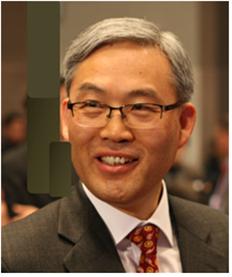 Professor Chun-Taek Rim Appointed as Associate Editor for IEEE TPEL
Professor Chun-Taek Rim of the nuclear and quantum engineering at KAIST was appointed as an associate editor of the Institute of Electrical and Electronics Engineers (IEEE) Transactions on Power Electronics (TPEL), an eminent academic journal bio-monthly published in the field of power electronics.The journal has a high impact factor (4.08), a measure reflecting the average number of citations to recent articles published in an academic journal, which ranks as the 6th the most influential journal among the 100 journals published by IEEE.Professor Rim was also appointed to an associate editor for IEEE Journal of Emerging and Selected Topics in Power Electronics in September in recognition of his expertise in wireless power and electric vehicles.
2013.11.15 View 9862
Professor Chun-Taek Rim Appointed as Associate Editor for IEEE TPEL
Professor Chun-Taek Rim of the nuclear and quantum engineering at KAIST was appointed as an associate editor of the Institute of Electrical and Electronics Engineers (IEEE) Transactions on Power Electronics (TPEL), an eminent academic journal bio-monthly published in the field of power electronics.The journal has a high impact factor (4.08), a measure reflecting the average number of citations to recent articles published in an academic journal, which ranks as the 6th the most influential journal among the 100 journals published by IEEE.Professor Rim was also appointed to an associate editor for IEEE Journal of Emerging and Selected Topics in Power Electronics in September in recognition of his expertise in wireless power and electric vehicles.
2013.11.15 View 9862 -
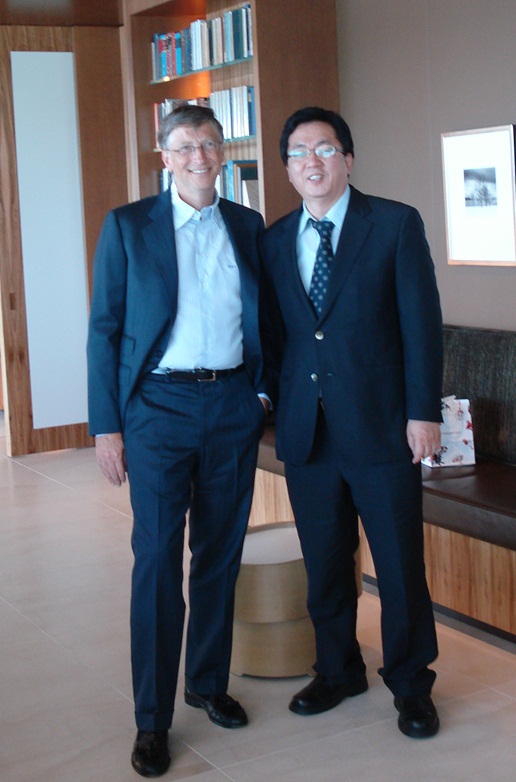 Professor Soon-Heung Chang meets with Bill Gates and discusses possible collaboration
Professor Soon-Heung Chang from the Department of Nuclear and Quantum Engineering, KAIST, who is also the president of Korea Nuclear Society (KNS), met Bill Gates, the co-founder and former chief executive officer (CEO) of Microsoft, on August 16, 2012 and discussed ways to cooperate for the development of a sodium-cooled fast reactor (SFR), a next generation nuclear power reactor.
According to Professor Chang, Bill Gates was amazed at Korea’s successful bids for nuclear power plants in the United Arab Emirates, even though Korea was a latecomer in the field of nuclear power. Bill Gates also showed a keen interest in Korea’s low electricity rates.
Gates focuses on solving fundamental problems in order to help improve the quality of life for humanity, rather than short-term temporary solutions, through infrastructure development such as energy. Particularly, he considers nuclear power as one of the most effective ways to supply clean energy which can provide electricity at a low cost while keeping carbon dioxide emission levels much lower than fossil fuels.
Bill Gates is a primary investor for an energy company called “TerraPower” based in Bellevue, Washington. TerraPower develops and commercializes nuclear power technology for a traveling wave reactor (TWR) that is designed to use spent fuels, i.e., depleted uranium, and runs technically “forever” because once fueled, the reactor does not need to be refueled for over 50 years. TerraPower’s TWR is to use metallic fuel, and Korea is the only country that currently develops SFR (KALIMER 600) using metallic fuel.
“Korea has an outstanding supply chain for the entire lifecycle of a nuclear power station from equipment manufacturing to operation,” said Professor Chang, while emphasizing the synergistic effects of forming partnership between Korea and TerraPower.
Professor Chang emphasized that Korea should create an opportunity based on lessons learned from the Fukushima crisis and actively move forward to achieve its leading position in the field of next generation nuclear reactors. He said that cooperation with Bill Gates will be a significant step towards the development of next generation nuclear reactors.
About Sodium-cooled Fast Reactor (SFR)
Sodium-cooled Fast Reactor (SFR) is a next-generation nuclear power reactor that will use spent fuels from conventional reactors. Arrangement of a fuel recycling system in
conjunction with currently-developing pyroprocessing technology would enable U-238, which makes up over 99% of natural uranium, to be used as a nuclear fuel. This would greatly reduce the toxicity and volume of spent fuels by up to 1,000 times and 100 times respectively when compared to existing reactors. This is truly a breakthrough innovation in spent fuel disposal and recycling.
2012.09.20 View 9992
Professor Soon-Heung Chang meets with Bill Gates and discusses possible collaboration
Professor Soon-Heung Chang from the Department of Nuclear and Quantum Engineering, KAIST, who is also the president of Korea Nuclear Society (KNS), met Bill Gates, the co-founder and former chief executive officer (CEO) of Microsoft, on August 16, 2012 and discussed ways to cooperate for the development of a sodium-cooled fast reactor (SFR), a next generation nuclear power reactor.
According to Professor Chang, Bill Gates was amazed at Korea’s successful bids for nuclear power plants in the United Arab Emirates, even though Korea was a latecomer in the field of nuclear power. Bill Gates also showed a keen interest in Korea’s low electricity rates.
Gates focuses on solving fundamental problems in order to help improve the quality of life for humanity, rather than short-term temporary solutions, through infrastructure development such as energy. Particularly, he considers nuclear power as one of the most effective ways to supply clean energy which can provide electricity at a low cost while keeping carbon dioxide emission levels much lower than fossil fuels.
Bill Gates is a primary investor for an energy company called “TerraPower” based in Bellevue, Washington. TerraPower develops and commercializes nuclear power technology for a traveling wave reactor (TWR) that is designed to use spent fuels, i.e., depleted uranium, and runs technically “forever” because once fueled, the reactor does not need to be refueled for over 50 years. TerraPower’s TWR is to use metallic fuel, and Korea is the only country that currently develops SFR (KALIMER 600) using metallic fuel.
“Korea has an outstanding supply chain for the entire lifecycle of a nuclear power station from equipment manufacturing to operation,” said Professor Chang, while emphasizing the synergistic effects of forming partnership between Korea and TerraPower.
Professor Chang emphasized that Korea should create an opportunity based on lessons learned from the Fukushima crisis and actively move forward to achieve its leading position in the field of next generation nuclear reactors. He said that cooperation with Bill Gates will be a significant step towards the development of next generation nuclear reactors.
About Sodium-cooled Fast Reactor (SFR)
Sodium-cooled Fast Reactor (SFR) is a next-generation nuclear power reactor that will use spent fuels from conventional reactors. Arrangement of a fuel recycling system in
conjunction with currently-developing pyroprocessing technology would enable U-238, which makes up over 99% of natural uranium, to be used as a nuclear fuel. This would greatly reduce the toxicity and volume of spent fuels by up to 1,000 times and 100 times respectively when compared to existing reactors. This is truly a breakthrough innovation in spent fuel disposal and recycling.
2012.09.20 View 9992 -
 Professor Jang Soon Heung Appointed International Consultant of the Fukushima Nuclear Disaster Task Force
The Japanese government appointed Professor Jang Soon Heung (department of Nuclear and Quantum Engineering) as the International Consultant to the Fukushima Nuclear Disaster Task Force.
Professor Hatamura Yotaro of the Tokyo University is the head of the task force and is tasked with finding out the cause and extent of damage of the disaster and minimize social cost and expansion of damage along with prevent a similar disaster from occurring.
The International Consultants will independently advise and look over the findings of the task force.
The members include: Professor Jang Soon Heung (Professor of KAIST), Richard A. Meserve (Carnegie Research Center Director/Former Chairman of Nuclear Regulatory Commission), Andre-Claude Lacoste (Chairman of French Nuclear Safety Regulatory Commission), and Lars-Eirk Holm (Secretary General of Sweden Health and Welfare).
2012.01.31 View 7879
Professor Jang Soon Heung Appointed International Consultant of the Fukushima Nuclear Disaster Task Force
The Japanese government appointed Professor Jang Soon Heung (department of Nuclear and Quantum Engineering) as the International Consultant to the Fukushima Nuclear Disaster Task Force.
Professor Hatamura Yotaro of the Tokyo University is the head of the task force and is tasked with finding out the cause and extent of damage of the disaster and minimize social cost and expansion of damage along with prevent a similar disaster from occurring.
The International Consultants will independently advise and look over the findings of the task force.
The members include: Professor Jang Soon Heung (Professor of KAIST), Richard A. Meserve (Carnegie Research Center Director/Former Chairman of Nuclear Regulatory Commission), Andre-Claude Lacoste (Chairman of French Nuclear Safety Regulatory Commission), and Lars-Eirk Holm (Secretary General of Sweden Health and Welfare).
2012.01.31 View 7879 -
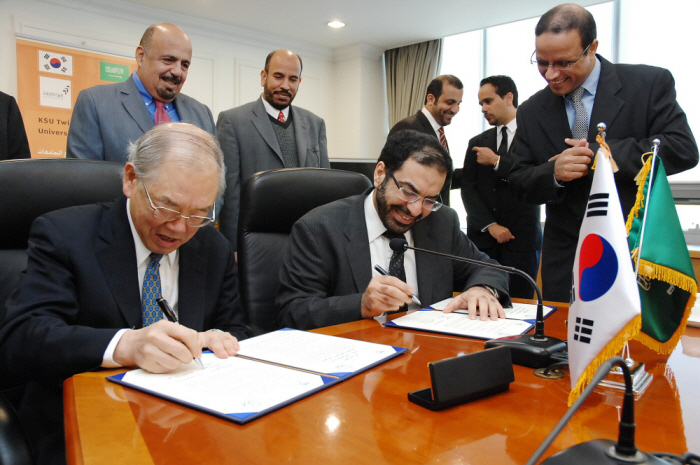 Minister of Higher Education of Saudi Arabia Visited KAIST to Sign Agreement on Joint Research Projects
Khaled bin Mohammad Al-Anqari, the Minister of Higher Education of Saudi Arabia, visited KAIST on October 26th to conclude a joint agreement with KAIST.
The group of Saudi Arabian visitors included Abdullah bin Abdularhman Al-Othman, President of the King Saud University, Osama bin Sadiq Tayeb, President of King Abdulaziz University, and Khalid bin Salih Al-Sultan, President of the best Saudi Arabian technological university, King Fahad University of Petroleum and Minerals.
Through research agreement between KAIST and the King Saud University and King Fahad University of Petroleum and Minerals, joint research projects, mutual visitations of research professors, interchange of academic programs, joint seminars and scientific societies will be held to promote the lively interchange between higher education institutions of Korea and Saudi Arabia.
In particular, King Saud University and KAIST has signed an agreement on joint research projects in the fields of “Solar-Ocean Thermal Exchange Desalination,” “Develop New Energy Management Service for Residential and Commercial Customers Using Smart Metering and Sensor Network Information” and “Superior Production of Lactic Acid from Saudi Dates Using Bioprocess Technology.”
The projects will be funded by the Saudi Arabian government, and their scope will be determined in the future
“Compared to the robust industrial economic interactions between the Middle East and Korea, the interchange of the two countries’ higher education institutions has been poor,” said Jong Hyun Kim, Visiting Professor of Nuclear & Quantum Engineering Department of KAIST who will be conducting one of the joint programs with the Electrical Engineering Department of the King Saud University. “Like this joint research, I hope KAIST will, in many different ways, lead the way in cooperating and interacting with higher education institutions of the Middle EAST.”
Al-Anquari, Minister of Higher Education of Saudi Arabia, who showed great interest in KAIST’s innovative research and high technology development, expressed his will to put more effort into extending the interchange between universities of Saudi Arabia and of Korea, including KAIST.
2010.11.03 View 14091
Minister of Higher Education of Saudi Arabia Visited KAIST to Sign Agreement on Joint Research Projects
Khaled bin Mohammad Al-Anqari, the Minister of Higher Education of Saudi Arabia, visited KAIST on October 26th to conclude a joint agreement with KAIST.
The group of Saudi Arabian visitors included Abdullah bin Abdularhman Al-Othman, President of the King Saud University, Osama bin Sadiq Tayeb, President of King Abdulaziz University, and Khalid bin Salih Al-Sultan, President of the best Saudi Arabian technological university, King Fahad University of Petroleum and Minerals.
Through research agreement between KAIST and the King Saud University and King Fahad University of Petroleum and Minerals, joint research projects, mutual visitations of research professors, interchange of academic programs, joint seminars and scientific societies will be held to promote the lively interchange between higher education institutions of Korea and Saudi Arabia.
In particular, King Saud University and KAIST has signed an agreement on joint research projects in the fields of “Solar-Ocean Thermal Exchange Desalination,” “Develop New Energy Management Service for Residential and Commercial Customers Using Smart Metering and Sensor Network Information” and “Superior Production of Lactic Acid from Saudi Dates Using Bioprocess Technology.”
The projects will be funded by the Saudi Arabian government, and their scope will be determined in the future
“Compared to the robust industrial economic interactions between the Middle East and Korea, the interchange of the two countries’ higher education institutions has been poor,” said Jong Hyun Kim, Visiting Professor of Nuclear & Quantum Engineering Department of KAIST who will be conducting one of the joint programs with the Electrical Engineering Department of the King Saud University. “Like this joint research, I hope KAIST will, in many different ways, lead the way in cooperating and interacting with higher education institutions of the Middle EAST.”
Al-Anquari, Minister of Higher Education of Saudi Arabia, who showed great interest in KAIST’s innovative research and high technology development, expressed his will to put more effort into extending the interchange between universities of Saudi Arabia and of Korea, including KAIST.
2010.11.03 View 14091 -
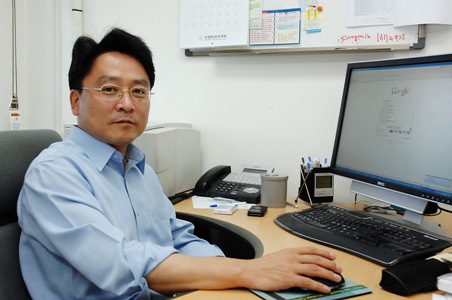 The thermal fluctuation and elasticity of cell membranes, lipid vesicles, interacting with pore-forming peptides were reported by a research team at KAIST.
A research team from KAIST, consisted of Sung-Min Choi, Professor of Nuclear and Quantum Engineering Department, and Ji-Hwan Lee, a doctoral student in the Department, published a paper on the “thermal fluctuation and elasticity of lipid vesicles interacting with pore-forming peptides.” The paper was carried by Physical Review Letters, an internationally renowned peer-review journal on physics on July 16, 2010.
Cell membranes, which consist of lipid bilayers, play important roles in cells as barriers to maintain concentrations and matrices to host membrane proteins. During cellular processes such as cell fission and fusion, the cell membranes undergo various morphological changes governed by the interplay between protein and lipid membranes. There have been many theoretical and experimental approaches to understand cellular processes driven by protein-lipid membrane interactions. However, it is not fully established how the membrane elastic properties, which play an important role in membrane deformation, are affected by the protein-membrane interactions.
Antimicrobial peptides are one of the most common examples of proteins that modify membrane morphology. While the pore-forming mechanisms of antimicrobial peptides in lipid bilayers have been widely investigated, there have been only a few attempts to understand the mechanisms in terms of membrane elastic properties. In particular, the effects of pore formation on the membrane fluctuation and elastic properties, which provide key information to understand the mechanism of antimicrobial peptide activity, have not been reported yet. The research team reports the thermal fluctuation and elasticity of lipid vesicles interacting with pore-forming peptides, which were measured by neutron spin-echo spectroscopy.
The results of this study are expected to pay an important role in understanding the elastic behavior and morphological changes of cell membranes induced by protein-membrane interactions, and may provide new insights for developing new theoretical models for membrane fluctuations which include the membrane mediated interaction between protein patches.
(a) (b)
Figure
(a) Schematics for bound melittin and pores in lipid bilayers
(b) P NMR signal ratio (with/without Mn2+) of DOPC LUV-melittin vs P/L at 30˚C. The dashed line is a guide for eyes.
2010.07.23 View 11191
The thermal fluctuation and elasticity of cell membranes, lipid vesicles, interacting with pore-forming peptides were reported by a research team at KAIST.
A research team from KAIST, consisted of Sung-Min Choi, Professor of Nuclear and Quantum Engineering Department, and Ji-Hwan Lee, a doctoral student in the Department, published a paper on the “thermal fluctuation and elasticity of lipid vesicles interacting with pore-forming peptides.” The paper was carried by Physical Review Letters, an internationally renowned peer-review journal on physics on July 16, 2010.
Cell membranes, which consist of lipid bilayers, play important roles in cells as barriers to maintain concentrations and matrices to host membrane proteins. During cellular processes such as cell fission and fusion, the cell membranes undergo various morphological changes governed by the interplay between protein and lipid membranes. There have been many theoretical and experimental approaches to understand cellular processes driven by protein-lipid membrane interactions. However, it is not fully established how the membrane elastic properties, which play an important role in membrane deformation, are affected by the protein-membrane interactions.
Antimicrobial peptides are one of the most common examples of proteins that modify membrane morphology. While the pore-forming mechanisms of antimicrobial peptides in lipid bilayers have been widely investigated, there have been only a few attempts to understand the mechanisms in terms of membrane elastic properties. In particular, the effects of pore formation on the membrane fluctuation and elastic properties, which provide key information to understand the mechanism of antimicrobial peptide activity, have not been reported yet. The research team reports the thermal fluctuation and elasticity of lipid vesicles interacting with pore-forming peptides, which were measured by neutron spin-echo spectroscopy.
The results of this study are expected to pay an important role in understanding the elastic behavior and morphological changes of cell membranes induced by protein-membrane interactions, and may provide new insights for developing new theoretical models for membrane fluctuations which include the membrane mediated interaction between protein patches.
(a) (b)
Figure
(a) Schematics for bound melittin and pores in lipid bilayers
(b) P NMR signal ratio (with/without Mn2+) of DOPC LUV-melittin vs P/L at 30˚C. The dashed line is a guide for eyes.
2010.07.23 View 11191 -
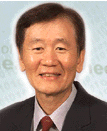 Professor Jong Hyun Kim receives two awards from ASME
Professor Jong Hyun Kim, Bently & Muszynska Endowed Chair Professor in the Dept. of Nuclear and Quantum Engineering, KAIST, has recently received Dedicated Service Award from the American Society of Mechanical Engineers (ASME). The award honors unusual dedicated voluntary service to ASME marked by outstanding performance, demonstrated effective leadership, and prolonged commitment. The award was bestowed on Professor Kim in recognition of his sustained and exemplary service, leadership, and contributions to ASME. While chairing the Heat Transfer Division of ASME, Professor Kim promoted industrial participation, broadened international exchanges, and spearheaded the initiative to institute the web-based conference organization that later became the standard tool for organizing all ASME conferences.
ASME has also announced that Professor Kim was selected to receive the Heat Transfer Memorial Award and will be honored at its winter annual meeting this November. This award is bestowed on individuals who have made outstanding contributions to the field of heat transfer through teaching, research, practice and design, or a combination of such activities. Professor Kim was selected in recognition of his exceptional and impactful contributions to industry through applied research and innovative applications of science, art, and technology of heat transfer and thermal engineering. In particular, he tackled some of the toughest critical technical issues of serious safety implications in nuclear industry. The results of his research over the past 35 years produced tangible and substantial economic benefits to energy and nuclear industry that are conservatively estimated to be in the range of a few hundred million dollars of cost savings.
Professor Kim is a Fellow of ASME. ASME is the world’s largest professional society for mechanical engineers with over 100,000 members.
2009.09.01 View 10875
Professor Jong Hyun Kim receives two awards from ASME
Professor Jong Hyun Kim, Bently & Muszynska Endowed Chair Professor in the Dept. of Nuclear and Quantum Engineering, KAIST, has recently received Dedicated Service Award from the American Society of Mechanical Engineers (ASME). The award honors unusual dedicated voluntary service to ASME marked by outstanding performance, demonstrated effective leadership, and prolonged commitment. The award was bestowed on Professor Kim in recognition of his sustained and exemplary service, leadership, and contributions to ASME. While chairing the Heat Transfer Division of ASME, Professor Kim promoted industrial participation, broadened international exchanges, and spearheaded the initiative to institute the web-based conference organization that later became the standard tool for organizing all ASME conferences.
ASME has also announced that Professor Kim was selected to receive the Heat Transfer Memorial Award and will be honored at its winter annual meeting this November. This award is bestowed on individuals who have made outstanding contributions to the field of heat transfer through teaching, research, practice and design, or a combination of such activities. Professor Kim was selected in recognition of his exceptional and impactful contributions to industry through applied research and innovative applications of science, art, and technology of heat transfer and thermal engineering. In particular, he tackled some of the toughest critical technical issues of serious safety implications in nuclear industry. The results of his research over the past 35 years produced tangible and substantial economic benefits to energy and nuclear industry that are conservatively estimated to be in the range of a few hundred million dollars of cost savings.
Professor Kim is a Fellow of ASME. ASME is the world’s largest professional society for mechanical engineers with over 100,000 members.
2009.09.01 View 10875 -
 Prof. Seong Publishes English Book on Reliability in Digital Control Systems
Prof. Poong-Hyun Seong of Department of Nuclear and Quantum Engineering has recently published an English-language book on reliability and risk issues in large scale safety-critical digital control systems used in complex facilities such as nuclear power plants.
The book entitled “Reliability and Risk Issues in Large Scale Safety-critical Digital Control Systems” is a result of Prof. Seong’s collaboration with some KAIST graduates who used to be under his guidance. The 303-page publication has been published by Springer, one of the world’s leading publishers of academic journals, as part of the Springer Series in Reliability Engineering.
The book consists of four parts; part I deals with issues related to hardware, part II software, part III human factors and finally the last part integrated systems. It can be purchased through some on-line book stores such as Amazon.com.
Prof. Seong served as an editor-in-chief for Nuclear Engineering and Technology (NET), an international journal of Korean Nuclear Society (KNS), from 2003 to 2008. He also worked as a chair of the Human Factors Division (HFD) of American Nuclear Society (ANS) from 2006 to 2007. Prof. Seong is now a commissioner of Korea Nuclear Safety Commission which is the nation’s highest committee on Nuclear Safety.
2008.12.26 View 14972
Prof. Seong Publishes English Book on Reliability in Digital Control Systems
Prof. Poong-Hyun Seong of Department of Nuclear and Quantum Engineering has recently published an English-language book on reliability and risk issues in large scale safety-critical digital control systems used in complex facilities such as nuclear power plants.
The book entitled “Reliability and Risk Issues in Large Scale Safety-critical Digital Control Systems” is a result of Prof. Seong’s collaboration with some KAIST graduates who used to be under his guidance. The 303-page publication has been published by Springer, one of the world’s leading publishers of academic journals, as part of the Springer Series in Reliability Engineering.
The book consists of four parts; part I deals with issues related to hardware, part II software, part III human factors and finally the last part integrated systems. It can be purchased through some on-line book stores such as Amazon.com.
Prof. Seong served as an editor-in-chief for Nuclear Engineering and Technology (NET), an international journal of Korean Nuclear Society (KNS), from 2003 to 2008. He also worked as a chair of the Human Factors Division (HFD) of American Nuclear Society (ANS) from 2006 to 2007. Prof. Seong is now a commissioner of Korea Nuclear Safety Commission which is the nation’s highest committee on Nuclear Safety.
2008.12.26 View 14972 -
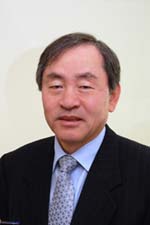 Prof. Cho Wins Best Paper Award
KAIST Prof. Nam-Zin Cho of the Department of Nuclear and Quantum Engineering, won the Best Thesis Award in the nuclear reactor physics category at the 2008 Winter Meeting of the American Nuclear Society held on Nov. 9-13 in Reno, Nevada.
His paper, entitled "Thermal Feedback Transient Analysis of a Pebble Fuel Based on the Two-Temperature Homogenized Model," was jointly authored by Hwi Yu and Jong-Un Kim under the guidance of Prof. Cho.
Prof. Cho was elected a fellow of the American Nuclear Society in 2001 and has served as the deputy editor of the Nuclear Science and Engineering, the research journal of the American Nuclear Society, since 1999.
2008.12.09 View 13299
Prof. Cho Wins Best Paper Award
KAIST Prof. Nam-Zin Cho of the Department of Nuclear and Quantum Engineering, won the Best Thesis Award in the nuclear reactor physics category at the 2008 Winter Meeting of the American Nuclear Society held on Nov. 9-13 in Reno, Nevada.
His paper, entitled "Thermal Feedback Transient Analysis of a Pebble Fuel Based on the Two-Temperature Homogenized Model," was jointly authored by Hwi Yu and Jong-Un Kim under the guidance of Prof. Cho.
Prof. Cho was elected a fellow of the American Nuclear Society in 2001 and has served as the deputy editor of the Nuclear Science and Engineering, the research journal of the American Nuclear Society, since 1999.
2008.12.09 View 13299 -
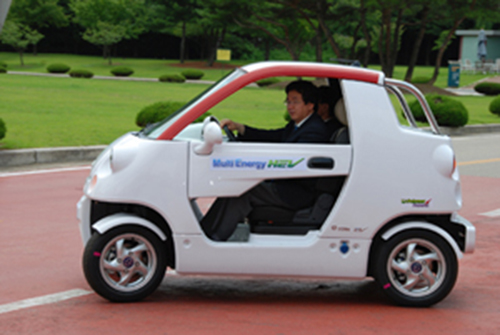 KAIST, CT&T Develop Multi-Energy Hybrid Electric Car
KAIST exchanged a memorandum of understanding for the development and production of a multi-energy plug-in hybrid electric car (ME-PHEV) with CT&T, an electric car maker, on Monday (June 30).
The ME-PHEV is a new vehicle model incorporating a small electric generator and solar energy as power source with conventional plug-in hybrid electric vehicle with rechargeable batteries. The new vehicle has been jointly developed by a research team led by Profs. Soon-Heung Chang and Yong-Hoon Chung, at the department of nuclear and quantum engineering, KAIST, and CT&T.
The ME-PHEV features an increased mileage, improved battery durability and better passenger convenience compared to conventional hybrid vehicles. The joint developers have applied for domestic and international patents.
Prior to the MOU signing ceremony, Prof. Chang, who is also a vice president of KAIST, had a trial ride of the vehicle for the media at the KAIST campus.
"Major car makers of the world currently focus on developing hybrid electric vehicles with battery and internal combustion engine. Compared to these cars, the ME-PHEV offers advantage in terms of reduced air pollution and lowered production costs," said Prof. Chang.
Under the agreement, CT&T will put the features of ME-PHEV into e-Zone, the company"s city-class, low-speed electric vehicle model, with a schedule go into commercial production of the car next year.
2008.07.02 View 14780
KAIST, CT&T Develop Multi-Energy Hybrid Electric Car
KAIST exchanged a memorandum of understanding for the development and production of a multi-energy plug-in hybrid electric car (ME-PHEV) with CT&T, an electric car maker, on Monday (June 30).
The ME-PHEV is a new vehicle model incorporating a small electric generator and solar energy as power source with conventional plug-in hybrid electric vehicle with rechargeable batteries. The new vehicle has been jointly developed by a research team led by Profs. Soon-Heung Chang and Yong-Hoon Chung, at the department of nuclear and quantum engineering, KAIST, and CT&T.
The ME-PHEV features an increased mileage, improved battery durability and better passenger convenience compared to conventional hybrid vehicles. The joint developers have applied for domestic and international patents.
Prior to the MOU signing ceremony, Prof. Chang, who is also a vice president of KAIST, had a trial ride of the vehicle for the media at the KAIST campus.
"Major car makers of the world currently focus on developing hybrid electric vehicles with battery and internal combustion engine. Compared to these cars, the ME-PHEV offers advantage in terms of reduced air pollution and lowered production costs," said Prof. Chang.
Under the agreement, CT&T will put the features of ME-PHEV into e-Zone, the company"s city-class, low-speed electric vehicle model, with a schedule go into commercial production of the car next year.
2008.07.02 View 14780 -
 Research Outputs over Carbon Nanotube by Prof. Choi Selected as Research Highlight by ACS
Research Outputs over Carbon Nanotube by Prof. Choi Selected as Research Highlight by ACS
Research Outputs over Carbon Nanotube by Prof. Choi Selected as Research Highlight by ACS
A research team headed by Seong-Min Choi, a professor of Nuclear and Quantum Engineering, KAIST, has developed technologies to stably disperse carbon nanotube particles in aqueous solutions and organic solvents, essential for industrial applications of carbon nanotube, and discovered the dispersion characteristics of carbon nanotube. The research outputs have been published by ‘Advanced materials’ (19, 929, 2007), the most distinguished journal in Material Science field, and introduced as Research Highlight at the May 7th edition of ‘Heart Cut’ by the American Chemical Society (ACS).
A number of processes for industrial applications of carbon nanotube require the dispersion of carbon nanotube in aqueous solutions or organic solvents, and thus far, surfactant particles or DNAs have been used to disperse carbon nanotube particles. However, they have shortcomings of easy destruction of dispersion. In order to overcome such shortcomings, Prof. Choi’s team produced carbon nanotube particle-dispersed aqueous solutions by using surfactant particles and then polymerized surfactant particles absorbed to the surfaces of carbon nanotube in situ to develop carbon nanotube with hydrophile and safe surfaces. The functional carbon nanotube so obtained shows features of easy dispersion in aqueous solutions and organic solvents even after being processed, such as freeze drying, therefore, is expected to significantly contribute to the development of application technologies of carbon nanotubes. Tae-Hwan Kim and Chang-Woo Doh, both doctoral students, played key roles in the researches carried out under the auspices of the Ministry of Science and Technology (MOST) as a nuclear power R&D project, and the relevant technologies were filed for patent applications.
Figures: Carbon nanotube before polymerization (left), carbon nanotube polymerized with surfactant particles (right)
2007.05.14 View 13103
Research Outputs over Carbon Nanotube by Prof. Choi Selected as Research Highlight by ACS
Research Outputs over Carbon Nanotube by Prof. Choi Selected as Research Highlight by ACS
Research Outputs over Carbon Nanotube by Prof. Choi Selected as Research Highlight by ACS
A research team headed by Seong-Min Choi, a professor of Nuclear and Quantum Engineering, KAIST, has developed technologies to stably disperse carbon nanotube particles in aqueous solutions and organic solvents, essential for industrial applications of carbon nanotube, and discovered the dispersion characteristics of carbon nanotube. The research outputs have been published by ‘Advanced materials’ (19, 929, 2007), the most distinguished journal in Material Science field, and introduced as Research Highlight at the May 7th edition of ‘Heart Cut’ by the American Chemical Society (ACS).
A number of processes for industrial applications of carbon nanotube require the dispersion of carbon nanotube in aqueous solutions or organic solvents, and thus far, surfactant particles or DNAs have been used to disperse carbon nanotube particles. However, they have shortcomings of easy destruction of dispersion. In order to overcome such shortcomings, Prof. Choi’s team produced carbon nanotube particle-dispersed aqueous solutions by using surfactant particles and then polymerized surfactant particles absorbed to the surfaces of carbon nanotube in situ to develop carbon nanotube with hydrophile and safe surfaces. The functional carbon nanotube so obtained shows features of easy dispersion in aqueous solutions and organic solvents even after being processed, such as freeze drying, therefore, is expected to significantly contribute to the development of application technologies of carbon nanotubes. Tae-Hwan Kim and Chang-Woo Doh, both doctoral students, played key roles in the researches carried out under the auspices of the Ministry of Science and Technology (MOST) as a nuclear power R&D project, and the relevant technologies were filed for patent applications.
Figures: Carbon nanotube before polymerization (left), carbon nanotube polymerized with surfactant particles (right)
2007.05.14 View 13103